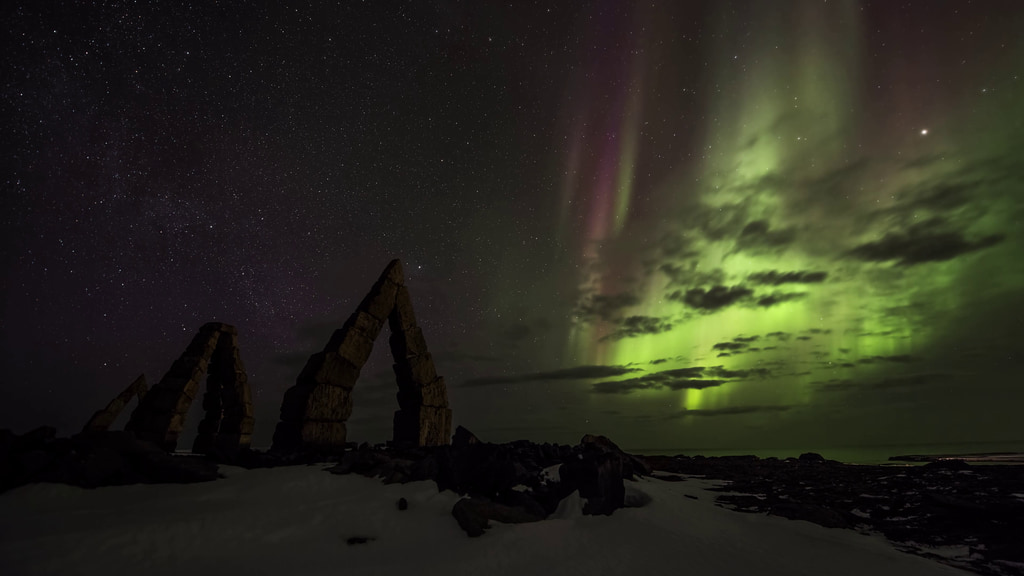The Aurora Named STEVE
For the first time, scientists have ground and satellite views of STEVE (short for Strong Thermal Emission Velocity Enhancement), a thin purple ribbon of light. Scientists have now learned, despite its ordinary name, that STEVE may be an extraordinary puzzle piece in painting a better picture of how Earth's magnetic fields function and interact with charged particles in space.
The Aurorasaurus team, led by Liz MacDonald, a space scientist at NASA’s Goddard Space Flight Center in Greenbelt, Maryland, conferred to determine the identity of this mysterious phenomenon. MacDonald and her colleague Eric Donovan at the University of Calgary in Canada talked with the amateur photographers from the Alberta Aurora Chasers, the people who first captured images of STEVE. Other collaborators on this work are: the University of Calgary, New Mexico Consortium, Boston University, Lancaster University, Athabasca University, Los Alamos National Laboratory, and the Alberta Aurora Chasers Facebook group.
Animation of STEVE (shown in purple) and aurora over North America. Credit: NASA GSFC/CIL/Krystofer Kim

Animated GIF of nightside reconnection forming STEVE. Credit: NASA GSFC/CIL/Krystofer Kim
Credits
Please give credit for this item to:
NASA's Goddard Space Flight Center
-
Scientist
- Elizabeth MacDonald (NASA/GSFC)
-
Science writer
- Kasha Patel (NASA/GSFC)
-
Producer
- Genna Duberstein (USRA)
-
Animator
- Krystofer Kim (USRA)
Release date
This page was originally published on Wednesday, March 14, 2018.
This page was last updated on Wednesday, May 3, 2023 at 1:46 PM EDT.
